Chapter 7: Weed Control
Chapter 7: Weed Control thompsbb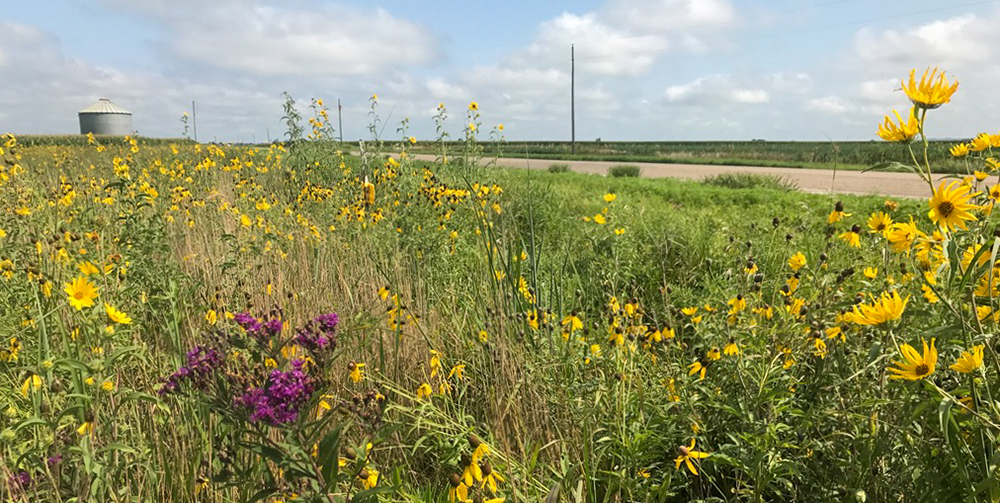
When developing a county weed control program, the objective is to control weeds in a way that is fiscally responsible and protective of groundwater and surface water. Not only is roadside weed control a best practice in integrated roadside vegetation management (IRVM), but it is also mandated by Iowa Code Chapter 317, which requires counties to control weeds growing in their roadsides. An IRVM approach relies on various weed control methods emphasizing cultural control—establishing and promoting healthy, native vegetation—and does not rely exclusively on herbicides.
Establish Native Vegetation
Establish Native Vegetation thompsbbNative vegetation is the cornerstone of IRVM and the front-line approach to weed control. Iowa native plants can thrive in tough roadside growing conditions and are naturally adapted to the state’s climate. Their height and deep roots help prevent weeds. If you have the time and trained personnel, keep natives healthy with the use of prescribed fire. See Chapter 9: Prescribed Burning for more information.
Do Not Overuse Herbicides
Do Not Overuse Herbicides thompsbbOverusing herbicides weakens all vegetation, making roadsides more susceptible to weed invasion. Herbicide overuse also eliminates desirable and harmless broadleaf species that would otherwise reduce weed invasion by taking up space and outcompeting weeds with similar light and nutrient requirements. In other words, when plant species have similar ecological roles and occupy the same space or niche within the environment, one will outcompete the other. Facilitating the growth of plenty of desired broadleaf species means there are more plants to shade out potential weeds that might creep in. Conversely, leaving a large area of bare soil with plenty of sunlight creates an environment that invites weeds to invade again. For these reasons, IRVM calls for careful spot herbicide use for weed control.
Know Your Herbicides
Know Your Herbicides thompsbbFor plant species that need to be managed using herbicides, talk to herbicide sales representatives and other roadside managers to learn more about how to most effectively and strategically use herbicides. The CDMS advanced search has information for all the chemical labels in the industry.
Consider Mowing
Consider Mowing thompsbbBefore resorting to herbicides, consider whether mowing is a viable alternative. The effectiveness of mowing depends on the timing and which species are targeted. The feasibility of mowing depends on the roadside slope and the availability of suitable equipment. Even if the road right-of-way is not suited to mowing with a tractor, spot mowing is still a viable weed control option.
Biological Control
Biological Control thompsbb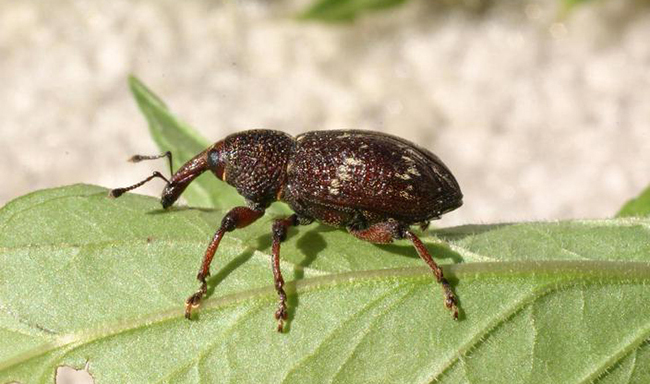
Biological control is a method of managing invasive species using living organisms such as insects, animals, and plants. For example, roadside managers who want to reduce a weed population may purchase and introduce to a weed-infested area an insect species that consumes the weed’s seeds or roots.
This method of weed control is inexpensive but can be slow to produce results. Biological control rarely eliminates the entire population of a weed in a given area but may reduce the size of the population. The Minnesota DOT recommends using biological control in areas one-third of an acre or larger and avoiding medians and roadsides that will be disturbed regularly.
Some weedy plant species that can be managed with biological control include spotted knapweed (Centaurea stoebe), leafy spurge (Euphorbia esula), and purple loosestrife (Lythrum salicaria).
To find out which insects are used to control a plant species, check recommendations in the Midwest Invasive Plant Network database or another resource that is updated with the latest information. Check to see if the insect you are considering using has any documented history of causing negative non-target impacts by also consuming desirable plants in the same area. Before introducing any insects for biological control, contact the Iowa Department of Agriculture and Land Stewardship to see if you need a permit. To learn more about where to purchase biological control insects, call your local county agricultural inspector, the Iowa Department of Agriculture and Land Stewardship, or search the web for companies that provide biological control insects.
Pay Attention to Timing
Pay Attention to Timing thompsbbTiming is key to successful mowing and spraying for weed management. Hiring a full-time roadside manager is the best way to provide professional, proactive, and systematic weed control. A roadside manager who is familiar with all of a county or city’s roadsides can better strategize where weed control efforts will be most effective and monitor the results of control strategies over time. Temporary contractors do not have this type of holistic understanding of local roadsides.
Keep Goals Realistic
Keep Goals Realistic thompsbbThere is no such thing as total weed eradication, so it is important to have realistic goals that involve keeping the presence of weeds at a manageable level. Weed species that pose no real threat to agriculture or natural areas should be left alone. Additionally, highly traveled roads should be prioritized.
Weed Life Cycles and Control Strategies
Weed Life Cycles and Control Strategies thompsbbAnnual Weeds
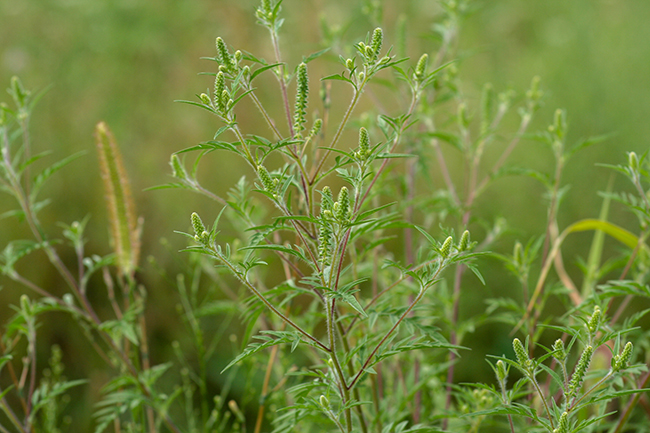
Annual weeds have a one-year life cycle. They germinate, grow, flower, set seeds, and die in one year or less. They spread only by seed. Common roadside annuals include common ragweed and giant ragweed.
Controlling Annual Weeds
- Mow before the weeds set their seeds.
- Eliminate bare soil and disturbances to vegetation.
Biennial Weeds
Biennial weeds have a two-year life cycle. In the first year, a basal rosette (circular cluster of leaves on or near the ground) is produced. A central flowering stalk elongates in the second year, and the plant dies after seed maturation. Biennials spread only by seed. Common roadside biennials include musk thistle, bull thistle, poison hemlock, wild parsnip, and wild carrot.
Controlling Biennial Weeds
- Mow before the weeds set their seeds for five consecutive years.
- Treat basal rosette plants with herbicides in fall or early spring when results are typically best before their stalks have elongated (at which point they become more tolerant of herbicides) and damage to desirable plants can be minimized.
- Establish native vegetation to deprive biennials of sunlight during their weak seedling stage.
Perennial Weeds
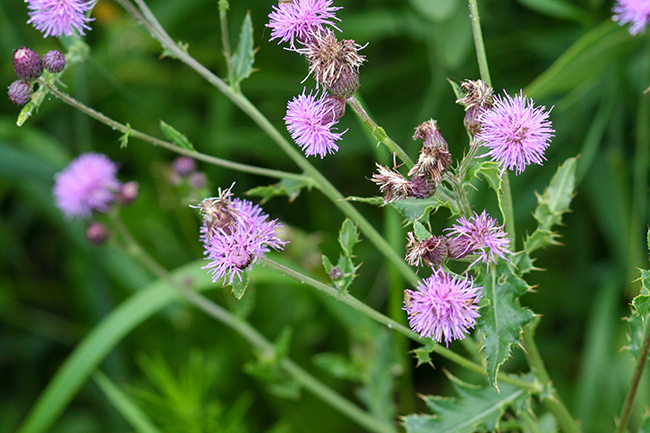
The lifespan of perennial weeds can vary from a few years to many years. Some perennials spread only by seed, while others spread by seed and a variety of underground reproductive structures. Because of their extensive root systems, controlling such perennials may be very difficult.
Controlling Perennial Weeds
- Treat perennials with herbicides.
- Mow to prevent seed maturation and extend the herbicide treatment window.
- Establish a diverse native plant community.
Iowa's Herbaceous Roadside Vegetation Threats
Iowa's Herbaceous Roadside Vegetation Threats thompsbb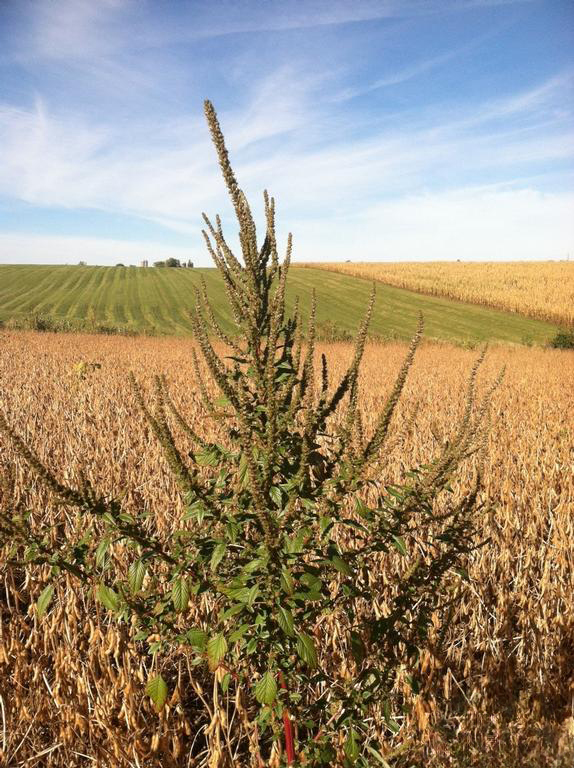
Bugwood.org)
Noxious weeds are plants that may damage agriculture, recreation, wildlife, or public health. Iowa’s noxious weed law (Iowa Code Chapter 317) gives each county, and specifically the weed commissioner, the authority to order the destruction of weeds classified as noxious by the state. In some counties, the roadside manager also serves as the weed commissioner, while in other counties, the roadside manager and weed commissioner are two separate positions.
The Iowa Legislature established the noxious weed law and lists weeds that were declared noxious in Iowa Code Chapter 317.1A. However, according to Iowa Code Chapter 317.1C, the legislature can modify the list via administrative rule. Therefore, for the most updated list, refer to Rule 21.58.4, “Noxious weeds list,” in the Iowa Administrative Code, Chapter 58 in the Agriculture and Land Stewardship Department section, instead of the list in Iowa Code 317.1A.
There are two types of noxious weeds listed. “Class A noxious weed for eradication,” which are weeds that are of the “highest priority for eradication of existing infestations and prevention of new infestations.” There are also “Class B noxious weed for weed control,” which are “a priority for preventing new infestations and stopping the spread of the species.” Refer to the resources in the “Weed and Invasive Species Information” section later in this chapter to learn how to best manage the species on the noxious weed list.
Herbicide Labels
Labels explain how to use herbicides effectively while protecting non-targeted plants, the environment, and people (including those applying the herbicide). Reading the label may be the most valuable use of your time related to weed control.
Adjuvants
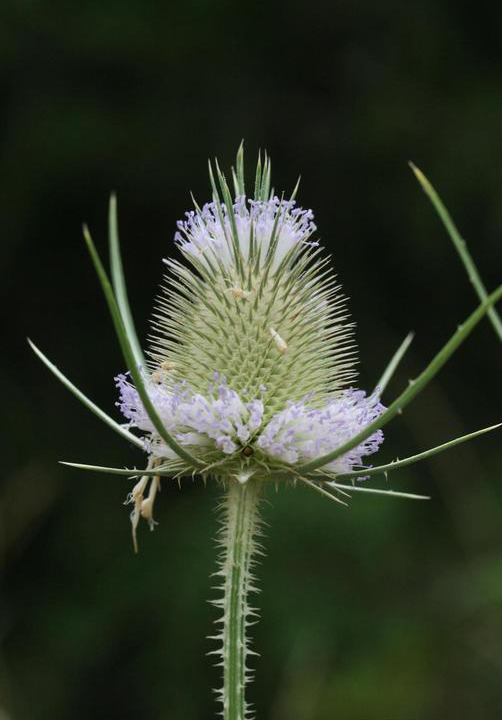
Bugwood.org)
Adjuvants are substances that are added to the herbicide solution to increase its effectiveness. These products are put in the water tank at labeled rates. The following adjuvant types are often used when using herbicides in roadsides.
Surfactants
These chemical compounds improve dispersion and reduce the surface tension of spray droplets. This results in increased penetration and absorption into the weed.
Crop Oils and Crop Oil Concentrates
Similar to surfactants, these also improve dispersion. The oil keeps leaf surfaces moist longer than water, allowing more time for penetration into the weed.
Stickers
These compounds cause the herbicide to stick to the weed and help prevent the solution from being washed off leaves by rain, evaporation, or runoff.
Drift Inhibitors
When herbicide droplets drift in the air, they tend to move away from their intended weed targets. These compounds reduce herbicide drift and increase spraying accuracy by increasing the size of the droplets sprayed.
Antifoaming Agents
These agents reduce foaming in the tank so it can be filled easily.
Water Conditioners
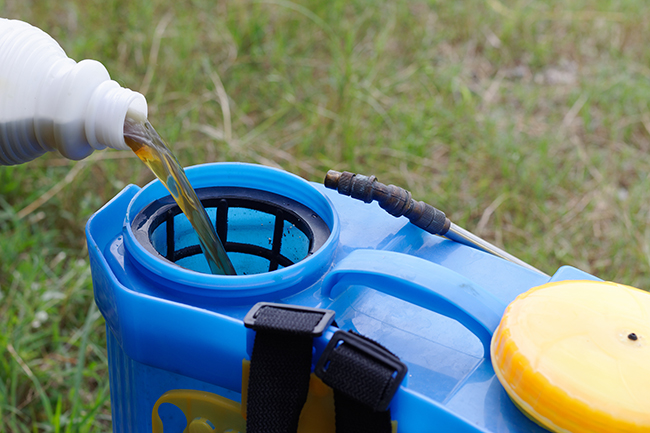
Ensure that hard water containing a high amount of dissolved minerals does not affect the active ingredient in your herbicides. You can use a simple pH meter or test strips to test the hardness of your water. Water is generally considered hard if mineral levels exceed 120 mg/L.
If you have hard water, mix in a chemical water conditioner with your herbicides. Water conditioners prevent minerals such as calcium and magnesium from interfering with the herbicide’s active ingredient. Read the label on the water conditioner to determine what pH and hardness conditions it can be used with, since this can vary.
Iowa's Roadside Trees and Brush
Iowa's Roadside Trees and Brush thompsbb
Iowa’s noxious weed list includes a few woody species. Additionally, several trees and shrubs that are not listed have nonetheless become troublesome in non-agricultural land throughout the state. In roadsides, all trees and brush are potential safety hazards. The primary goal of roadside tree and brush control is to increase safety on the roads. Safety goals include:
- Providing motorists with unobstructed lines of sight.
- Ensuring visibility of all signs in the roadsides.
- Eliminating immovable objects that can cause a dangerous collision if vehicles leave the road in an accident.
- Alleviating snow drifts caused by the presence of trees and brush.
- Reducing shade where it prolongs ice on the roads.
Most roadside tree and brush control is accomplished mechanically or chemically. However, a correctly timed prescribed burn can also control brush.
For complete brush control information, see Chapter 8: Brush Control, and refer to “Tree and Brush Control for County Road Right-of-Way,” a 2002 manual from the Iowa Highway Research Board and the Iowa Roadside Management Office.
Ways to Reduce Herbicide Use
Ways to Reduce Herbicide Use thompsbb- Know which weeds under what circumstances actually constitute threats to native vegetation.
- Know each herbicide’s target species and appropriate application schedule.
- Use the latest, most accurate herbicide application technology.
- Work with adjacent landowners to address disturbances that cause weeds, such as excessive vegetation clearing and heavy off-road vehicle use that disturbs the soil, creating bare areas that can be invaded by weeds.
- Hire conservation-minded operators for spray crews.
- Resists outside pressure to do more spraying.
Landowner Education
Landowner Education thompsbb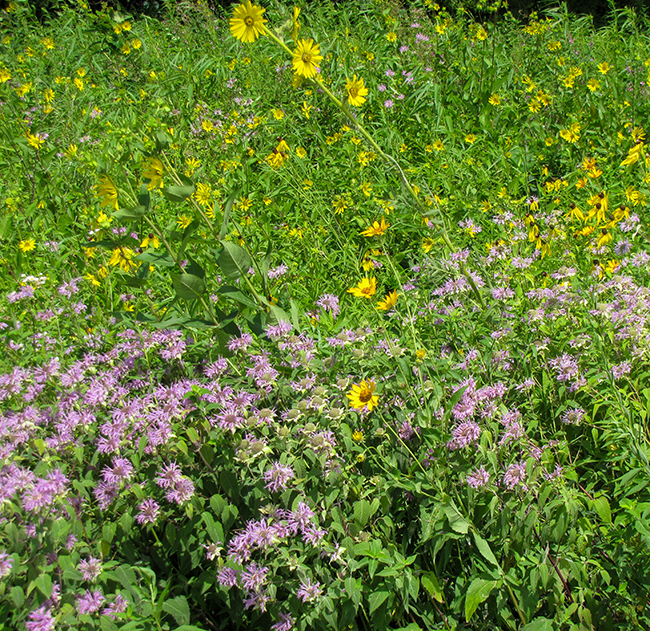
Resisting outside pressure to apply more herbicides might require educating landowners—or even county or city elected officials—on why spraying would be inappropriate. The following points can be helpful when talking to someone whose weed control philosophy is based primarily on experience with row crops and lawns.
- Roadside weed control bears no resemblance to row crop weed control. Corn and soybeans are annual species maintained in bare soil, a practice that invites weeds and requires continuous cultivation and herbicide use. On the other hand, native seed mixes designed for roadsides create diverse stands of perennial vegetation that prevent weeds by occupying all available space. Overuse of herbicides works against this method of weed control.
- Native prairie grasses and wildflowers may be tall and appear unkempt, but they are the plant species most adapted to Iowa’s climate and growing conditions. Their extremely deep roots enable them to survive environmental stressors, and their unique metabolism allows them to grow tall and thrive during long, hot summers. Because of these characteristics, native plants outcompete weeds.
- Broadleaf wildflowers included in native seed mixes are part of the weed control plan. They occupy a niche in the plant community otherwise occupied by weeds and are not a threat to agriculture.
- A pure stand of any grass is an unnatural condition that is sustainable only through the use of herbicides. Diverse prairie plantings are better able to outcompete weeds and require fewer herbicides than a stand of one species.
- Overuse of herbicides in any roadside creates openings for weeds by weakening grasses and eliminating beneficial broadleaf wildflower species.
Landowner Permits and Letters
According to Iowa Code Section 317.13, counties must require individuals to obtain work permits for the burning, mowing, or spraying of roadsides included in IRVM plans. These activities must be consistent with the county’s adopted IRVM plan. For a sample of what these permit applications look like, see Appendix 7A: Sample Landowner Work Permit.

Counties may also choose to create permits or request forms for individuals to collect seeds, plant native seed or plants, or manage the invasive species in roadsides bordering their property. Landowners who do not want the roadside vegetation adjacent to their property sprayed with chemicals make up the bulk of these permit applications. For a sample of what these request forms look like, see Appendix 7B: No Spray Request.
Investigating Suspected Landowner Spraying Encroachment
For roadside sites that you suspect have been sprayed, you can contact the Pesticide Bureau at the Iowa Department of Agriculture and Land Stewardship (IDALS). The bureau will send a pesticide inspector who will investigate to determine whether it was a result of direct spraying or drifting. The inspector will issue a report but cannot pursue legal remediation on your behalf; that is in the purview of the county attorney. If you want to pursue monetary damages for a violation of Iowa Code, consult with your county attorney, who can notify the responsible landowner. If the spraying was inadvertent, the landowner or farm operator may have liability insurance that can result in a settlement with the county attorney in 9–12 months. Word gets around, and enforcing Iowa Code related to roadside vegetation sends a message to landowners that there will be consequences for people who spray roadside vegetation.
The Iowa State Association of Counties General Counsel (515-369-7014) is a good resource for questions regarding sections of Iowa Code that apply to roadside vegetation management.
Implementing the County Weed Control Plan
Implementing the County Weed Control Plan thompsbbMost counties that execute their weed control plan in-house do so with the following parameters:
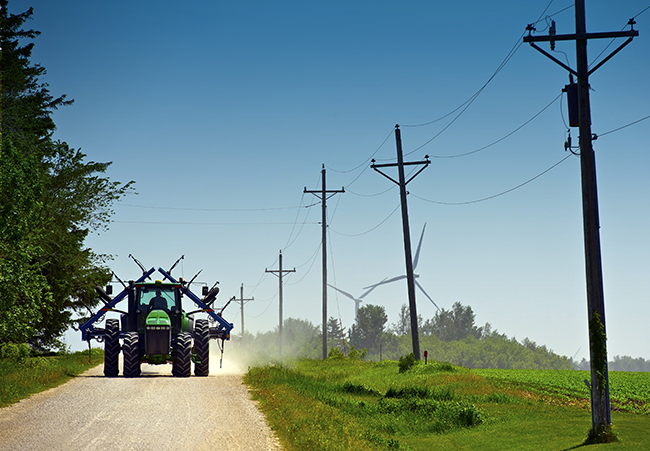
In-house county staff are attuned to the wants and needs of the farmers, landowners, gardeners, beekeepers, prairie enthusiasts, and others in the community. This can make for a smoother implementation of the weed control plan. one full-time employee for much of the summer
- two seasonal employees
- one primary spray rig
- $15,000–$30,000 spent on chemicals each year (as of 2024)
- at least half of the county roadsides are managed for weeds each year; often, one-half of the county will be managed one year, then the other half the following year
- herbicide applicator licenses and certifications maintained
- proper herbicide storage
- proper disposal of herbicide containers
- awareness of the latest developments in herbicide and sprayer technology
The benefits of providing in-house county weed control include:
- The county has control over how roadsides are managed. Sensitive areas such as gardens, bee hives, organic farms, prairie remnants, and roadside wildflowers can be protected.
- Having someone on staff who can apply herbicides and effectively control weeds is a great asset for roadside managers and county conservation staff.
- When the person executing the plan lives in the county, personal pride and accountability become part of the equation, resulting in a more conscientious effort.
IRVM Herbicide Application History
IRVM Herbicide Application History thompsbb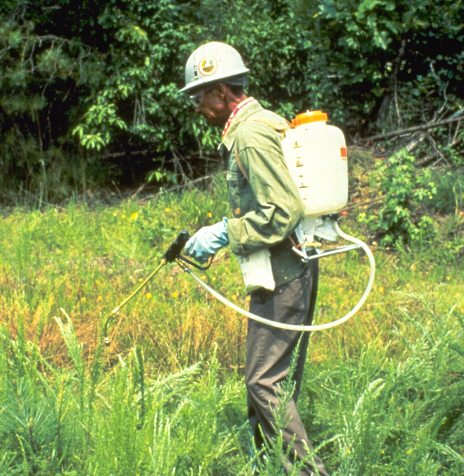
In the early days of IRVM, many counties sent crews into ditches equipped with backpack sprayers to carefully spot-spray weeds. While this method provided good weed control with a minimal amount of herbicide, roadside managers soon learned they could not cover enough of the county since it takes a lot of time to manage weeds on foot.
Since then, IRVM has helped drive the development of spray truck technology that delivers herbicides with the accuracy and control needed to live up to the program’s original principles—killing target species without weakening non-target species or putting too many chemicals in the ground. Progress has been made, not just with more responsive on/off control switches and multi-directional spray nozzles, but also with systems that monitor flow, record data, and significantly reduce operator exposure. As with any spraying equipment, the technology is only as good as the person whose finger is on the trigger. The objective is still to spot spray. Beware of getting comfortable and sitting too long in the cab, which can make you drowsy and more likely to miss problem weeds. Be conscientious, stay alert, and be ready to grab the handheld sprayer and walk to that distant shrub to treat it properly. Never underestimate the value of handheld labor; sometimes, it is still best to put on the old backpack.
Roadside Real Talk
Insights from Roadside Managers and Other Professionals
We don’t spray shoulders, just bridge abutments and guardrails. We don’t spray wild parsnip unless asked or if there’s a really rank patch. Unfortunately, if we tried to spray every parsnip plant, we’d essentially be blanket-spraying many areas.
—Jim Uthe and James Devig, Dallas County, 2024
I publicize in the paper when we will start spraying and encourage people to call me with locations of sensitive areas—gardens, bee hives, people who have allergies, etcetera. I have “No Spray Zone” signs for willing landowners.
—Jeff Chase, Des Moines County, 2024
High-diversity roadsides are more robust and more resistant to weeds. Maintain high diversity even if you don’t have the opportunity to establish natives. Don’t spray species that are not creating problems. Our goal each season is to cover half the county for noxious weeds and the other half for brush. Most of the weed spraying is noxious thistles and teasel. When spraying brush, we try to cover areas in which brush and trees were cut the prior winter to catch any regrowth.
We have isolated patches of garlic mustard that get sprayed. However, what exists in the ditch is usually spillover from the woods. What makes it to the ROW is just the tip of the iceberg, so I don’t get too excited about chasing it down. We have plenty of parsnip that, historically, were sprayed every year. Still have plenty of it. We currently do not spray parsnip.
—Wes Gibbs, Jones County, 2024
I feel like addressing the spraying of noxious weeds was one way we built some goodwill as we have aggressively attacked those during the peak months of June and July.
—Sean O’Neill, Sac County, 2024
I mostly use the web or my sales rep for technical support. It’s too hard to maintain up-to-date, written information on the most effective herbicides for each species. But like anything else, the advice is only as good as the source.
—Josh Brandt, Cerro Gordo County, 2009
Spray Systems
Spray Systems thompsbbCounties and cities typically use truck- or trailer-mounted chemical injection (high-end) or tank mix (basic) herbicide spray systems. The following is a description of one county’s two spray rigs, which are representative of the range of equipment available.
Our high-end unit is a chemical injection system. This unit has a GPS to record the rate, type, and amount of chemical used. We download that info to our desktop and print our reports. Our system has three injection pumps with three chemical tanks and a 300-gallon water tank, all on a skid for easy loading and unloading on the pickup. All the controls and the electric start are mounted in the cab on a computer stand. We have three bumper-mounted spray nozzles—6 feet, 20 feet, and 30 feet—and a hose reel with 300 feet of hose in the back. We like this unit because we can easily switch chemicals to spray something else, and one person can load and unload everything in less than an hour. A downside of this system—we can only use liquid chemicals, otherwise, everything gets plugged up.
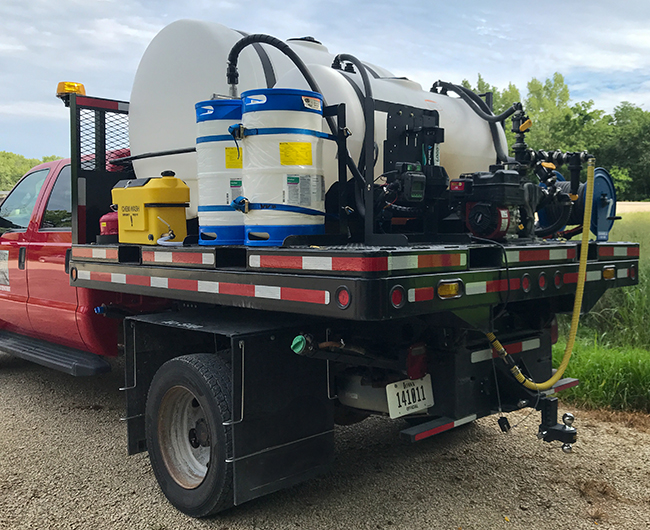
Our basic unit can also be loaded in the truck by one person. Just about any chemical can be used because it’s a tank mix system with an agitator in the tank. It has a 200-gallon tank, also on a skid, run by a five-and-a-half horsepower motor. We have two nozzles, a 6-foot and a 30-foot on the right front bumper. There is a hose reel in the back with 200 feet of hose. There’s no GPS on this system, so we have to keep track of everything. We mounted switches in the cab to run the nozzles, but we have to get out to turn the system on and off.
Another type of truck-mounted herbicide spray system used in roadsides is invert emulsion. It was developed to reduce herbicide drift and volatilization by producing large droplets of water surrounded by oil. The droplets do not dry as fast as water, so leaf penetration is greater. Invert emulsion sprayers do not work with all types of chemical products; liquid formulations usually work best. Due to the oil used in invert emulsion, roadsides treated with this method should be monitored for phytotoxicity, which is when a chemical substance hinders the growth of plants such as perennial grasses.
Spray Nozzles
Bumper-mounted spray nozzles or raised, multi-section, nutating spray nozzles are typically used on county rigs. Here is one county roadside manager’s description of both nozzle types:
A multi-section, nutating spray head allows a mindful operator to choose which section of the ditch to spray—in two, four, or six-foot increments out to 30 feet. A system with multiple bumper-mounted nozzles can spray different distances, too, but they tend to spray everything up to that distance. The multi-section system uses less herbicide primarily by hitting a narrower band. But if operators of multi-section systems hit all seven switches every time they spray a single thistle—just to make sure they don’t miss—there won’t be much reduction in herbicide. Ultimately, a good operator still makes the difference.
Spray System Components With Options/Suggestions
Installation Method
- skid-mounted
- permanent truck or trailer
Water Tank
- 300–750 gallons (typical)
- 1,000 gallons (requires a commercial driver’s license to operate)
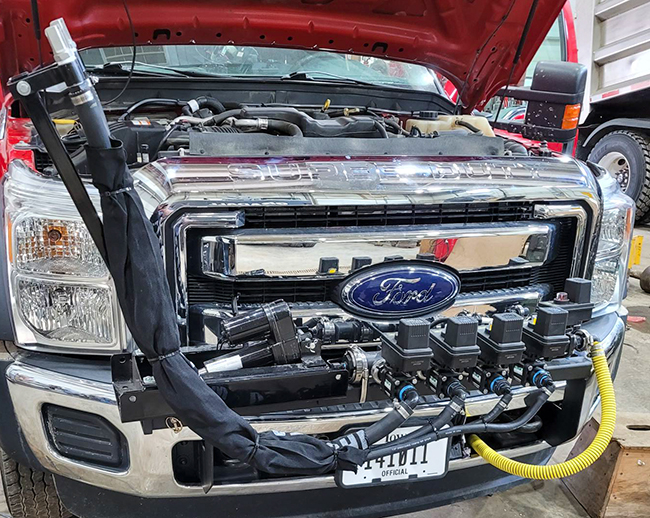
Chemical Mixing System
- tank-mix system with mechanical agitation (chemicals added manually to the large water tank)
- chemical injection system with 2–3 separate chemical tanks (chemicals mixed with water after passing from the tank)
Water Pump
- roller
- piston
- centrifugal
- diaphragm
Water Pump Motor
- 5.5–11 horsepower
Injection Pumps
- application of at least 20–40 gallons per minute
Hose Reel
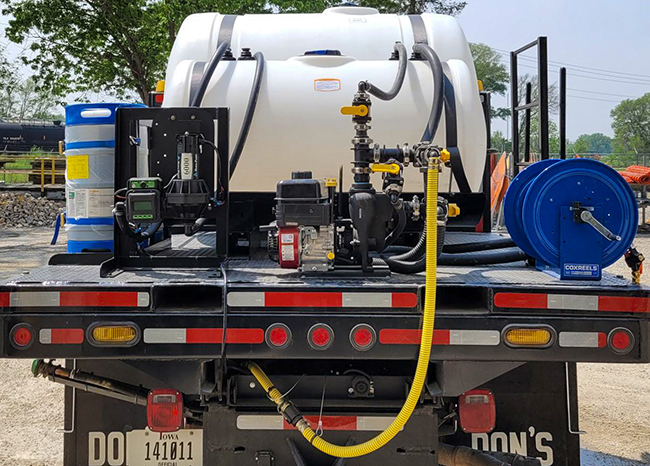
The flatbed contains the water tank, water pump and motor, hose reel, and handheld spray gun. capable of storing a hose 200–300 feet long and ½ to ¾ inches in diameter of the threaded fitting inside the hose (electric rewind recommended)
Propellant Method
- spray gun to deliver the spray
- spray wand attached to a hose to extend the reach of the spray gun
- one-sided truck-mounted spray heads
- 2–4 bumper-mounted nozzles
- raised nutating head with multi-direction spray sections
Console
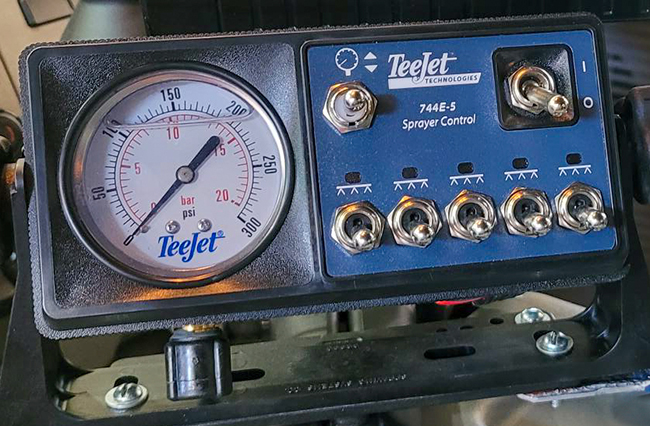
The cab-mounted console features the controller with valve switches and pressure gauge. featuring controllers, switches, GPS, computer
Controller
- with adjustable application rate
Flow Meter
- records herbicide application data
GPS
- maps spray location
- GPS units may come with additional software that is installed on a tablet or computer
Backpack Sprayers
The backpack sprayer is the best way to reduce herbicide use and target specific invasive plants, especially in diverse wildflower plantings. Consider the following tips:
- Use a low-volume backpack sprayer.
- A 4-foot wand reaches right down to the target plant.
- Herbicides made to kill broadleaf weeds will also kill wildflowers.
- Clopyralid works on tough weeds without a lot of residual effect.
- Follow the spray mixing rates on the label.
Roadside Real Talk
Insights from Roadside Managers and Other Professionals
We have an 800-gallon tank. We like using a lot of water; bigger droplets equals less drift.
Our spray rig came with an 8-horsepower engine which failed due to a mechanic’s error and was replaced with an 11-horsepower due to availability. It lasted 8 or 9 years and was replaced with a 13-horsepower, which lasted 8 or 9 years, too. We are on our second 13-horsepower HP now. Our pump is a Hypro centrifugal pump with an electric clutch. The Legacy 6000 can be used as a datalogger and rate controller. When our old datalogger died, we just piggybacked the Legacy onto our existing rate controller because it was a lot less work than redoing everything. We recommended a minimum of two chemical injection tanks, one brush and one thistle. We used to put 2,4-D in our third tank for use on large patches of various undesirable weeds—giant ragweed, hemp, crown vetch, parsnip, hemlock, etcetera. Now we put a low rate, 5 ounces per acre, of Method herbicide in the third tank and use it in addition to our brush mix when spraying honeysuckle.
—Jim Uthe and James Devig, Dallas County, 2024
Additional Weed Control Information
Additional Weed Control Information thompsbbExcellent up-to-date information about controlling invasive species is available on the web. Take advantage of the following websites.
Weed and Invasive Species Information
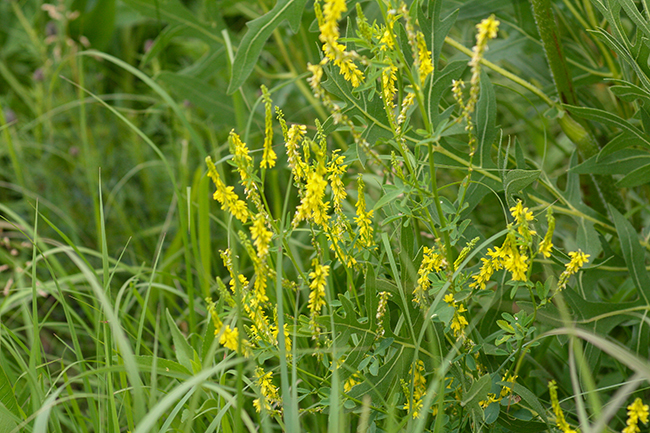
According to the Missouri Department of Conservation's Invasive Plants website, invasive yellow sweet clover has overwhelmed many Midwestern prairies with its ability to set thousands of seeds that remain viable for decades. Iowa Weed Commissioners: This website includes weed identification brochures from nearby states and the Hawkeye Cooperative Weed Management Area. It also has presentations about products and calibration sheets.
- Midwest Invasive Plant Network Invasive Plant Control Database: Information on controlling common Midwest invasive plants.
- Invasive Plant Fact Sheets: This information is from the Pennsylvania Department of Conservation and Natural Resources, though many of the species covered are also troublesome in Iowa. The fact sheets discuss the identification, distribution, and biology of invasive plants.
- Invasive Plants | Missouri Department of Conservation: These pages outline the identification and control of many invasive and troublesome species common to Iowa.
- Weed Science | University of Wisconsin-Madison: Good general invasive plant management information and fact sheets from the University of Wisconsin’s Integrated Pest and Crop Management program.
- Invasive Plant Atlas of the United States: Many of Iowa’s invasive/nuisance plants are included in this list of invasive species of the Eastern United States. Pictures and control methods are provided.
Herbicide Information
- Herbicide Effectiveness on Invasive Plants in Wisconsin: This table details the effectiveness of 35 herbicides on 32 different invasive plants based on research and field observations.
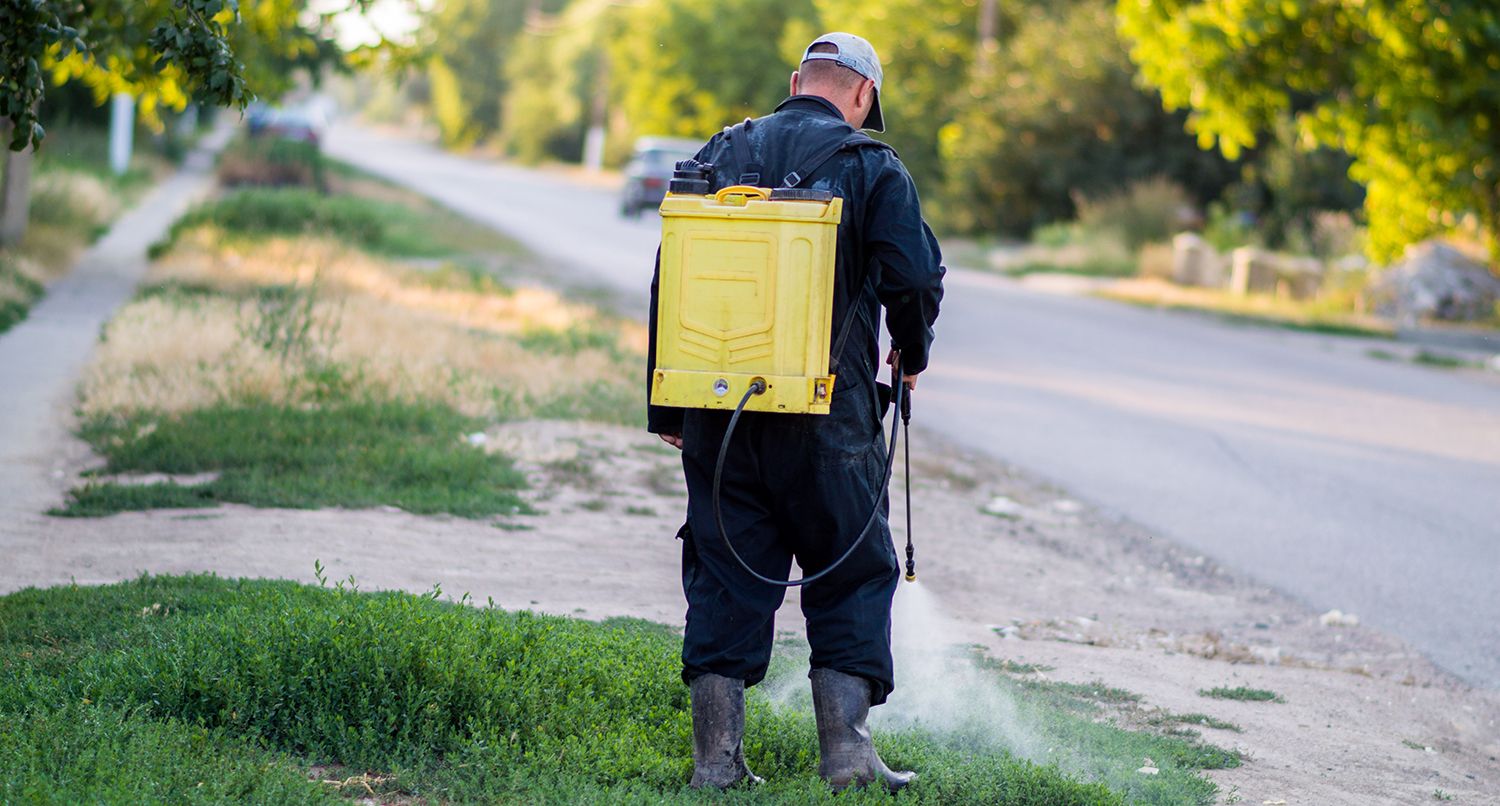
Herbicide Suppliers
- Alligare
- Corteva Agriscience
- Envu
- Helena Agri-Enterprises
- Midwest Spray Team & Sales, Inc.
- Nutrien Ag Solutions
- Van Diest Supply Company
Herbicide Spray Equipment and Software Companies
Tips for Especially Troublesome Weeds
Tips for Especially Troublesome Weeds thompsbbThe lower dose of 2 ounces of aminopyralid for Canada thistle seems to knock them out while not visually impacting common milkweed that may be within or close proximity to the thistle patch. Here in Black Hawk County we have found several problem weeds and brush. This year we started to use aminopyralid, triclopyr, metsulfuron-methyl for our brush and broadleaf herbicide, and we also have several spots of Japanese knotweed that we sprayed with triclopyr and completely killed. We sprayed it early to mid-summer and only a handful of small re-growth occurred. Then we also sprayed the regrowth, and it’s now dead.
—Griffin Cabalka, Black Hawk County, 2024
Consider hitting teasel rosettes again in the fall after the main spraying is done because you just don’t have time to hit everything during the season. Rosettes can be missed and you can go back in the fall in bad areas and hit what you missed and get ahead for the next growing season.
—Josh Batterson, Wapello County, 2024
With spring burns for multiple years in a row up to four years with follow-up mowing and spot spraying, we saw a huge reduction, close to 90 percent, in wild parsnip in a native plot we manage using this technique.
Mow or cut Japanese knotweed mid-summer, then apply aminopyralid in the fall right before the first frost.
To manage phragmites, use a strong solution of glyphosate mid-summer with yearly follow-up and re-treat.
For leafy spurge, use two applications of potassium salt of aminocyclopyrachlor at least two weeks aparat in the spring and a fall application if possible.
—Lakota Kirst, Cerro Gordo County, 2024
Aminopyralid achieves a very high level of control on thistle with minimal disturbance to grass. A custom mix for spraying cut stump, cut stubble, and basal is better than premixed stuff.
—Wes Gibbs, Jones County, 2024